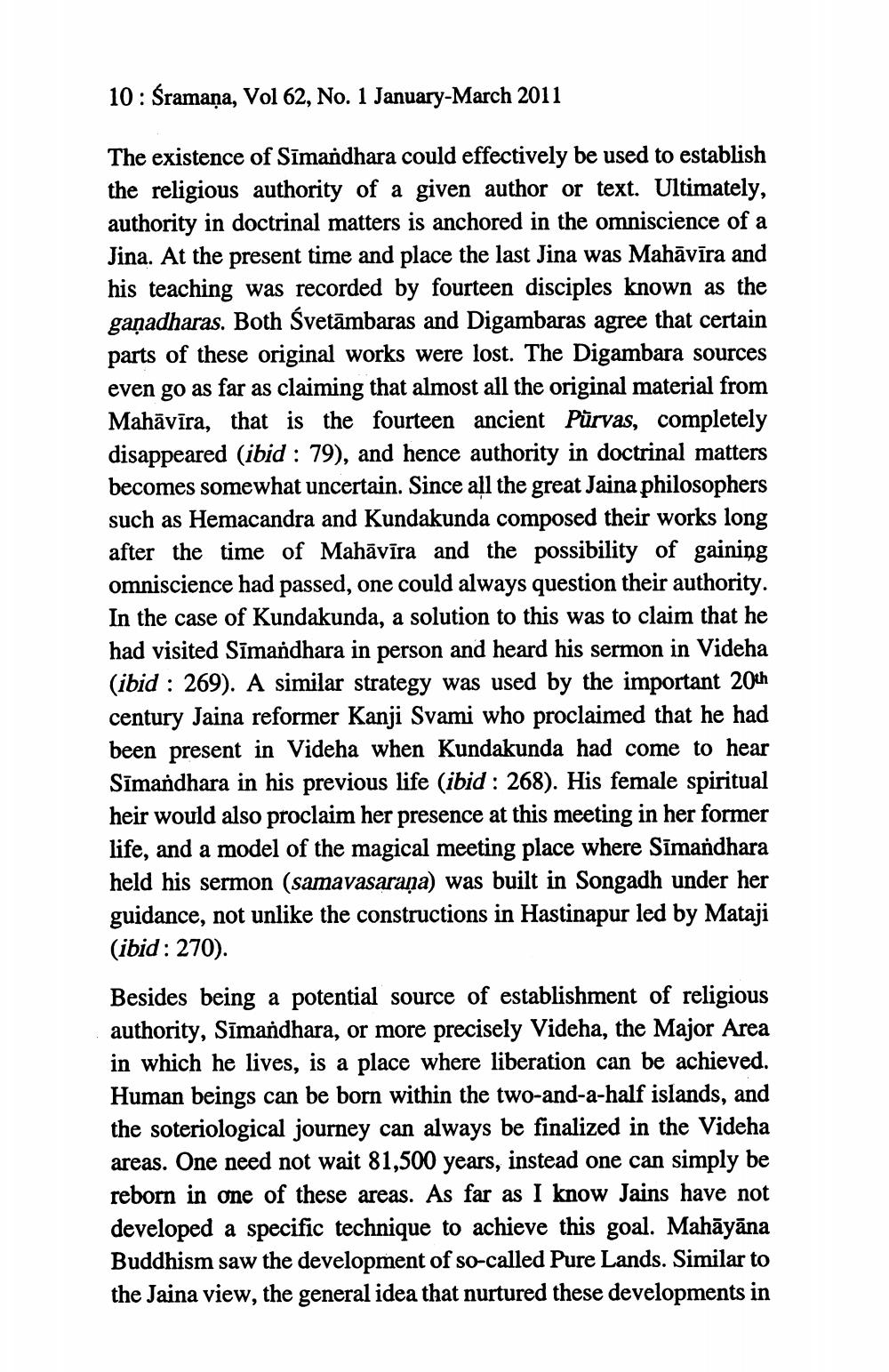________________
10: Śramaņa, Vol 62, No. 1 January-March 2011
The existence of Sīmandhara could effectively be used to establish the religious authority of a given author or text. Ultimately, authority in doctrinal matters is anchored in the omniscience of a Jina. At the present time and place the last Jina was Mahāvīra and his teaching was recorded by fourteen disciples known as the ganadharas. Both Śvetambaras and Digambaras agree that certain parts of these original works were lost. The Digambara sources even go as far as claiming that almost all the original material from Mahāvīra, that is the fourteen ancient Purvas, completely disappeared (ibid: 79), and hence authority in doctrinal matters becomes somewhat uncertain. Since all the great Jaina philosophers such as Hemacandra and Kundakunda composed their works long after the time of Mahāvīra and the possibility of gaining omniscience had passed, one could always question their authority. In the case of Kundakunda, a solution to this was to claim that he had visited Sīmandhara in person and heard his sermon in Videha (ibid: 269). A similar strategy was used by the important 20th century Jaina reformer Kanji Svami who proclaimed that he had been present in Videha when Kundakunda had come to hear Sīmandhara in his previous life (ibid: 268). His female spiritual heir would also proclaim her presence at this meeting in her former life, and a model of the magical meeting place where Sīmandhara held his sermon (samavasaraṇa) was built in Songadh under her guidance, not unlike the constructions in Hastinapur led by Mataji (ibid: 270).
Besides being a potential source of establishment of religious authority, Sīmandhara, or more precisely Videha, the Major Area in which he lives, is a place where liberation can be achieved. Human beings can be born within the two-and-a-half islands, and the soteriological journey can always be finalized in the Videha areas. One need not wait 81,500 years, instead one can simply be reborn in one of these areas. As far as I know Jains have not developed a specific technique to achieve this goal. Mahāyāna Buddhism saw the development of so-called Pure Lands. Similar to the Jaina view, the general idea that nurtured these developments in




